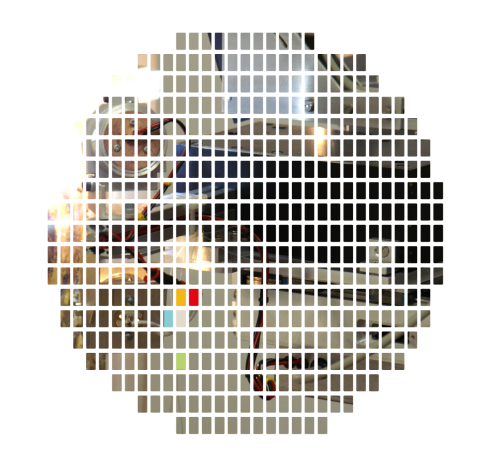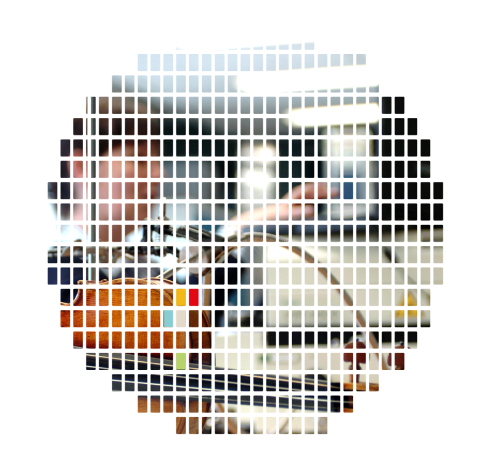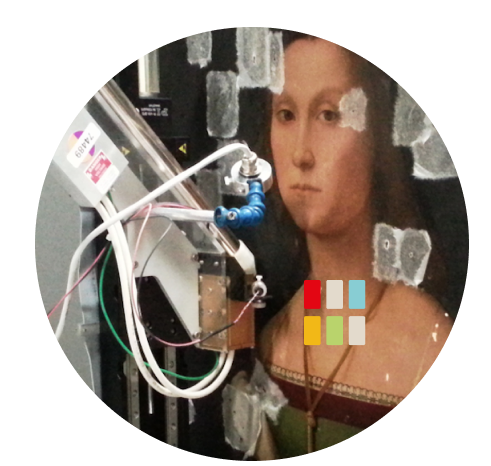E-RIHS in a nutshell
Who we are
E-RIHS is the European Research Infrastructure for Heritage Science, created to support the research community on heritage interpretation, preservation, documentation, innovation and management.
A new paradigm in heritage science
Our community has worked together in Heritage Science since 1999, when the first European project started.
Prestigious institutions across Europe joined the community and managed successful projects such as

Eu-ARTECH, CHARISMA, IPERION CH and IPERION HS, ARIADNE, PARTHENOS and SSHOC, with the aim to phase out the fragmentation, isolation or duplication of efforts in the field and to develop a new paradigm in the Heritage Science field, founded on excellence, joint research and networking.
A shared roadmap for boosting European research
In 2016, E-RIHS was included in the ESFRI Roadmap, marking the beginning of its journey toward becoming a legal entity. As of March 28, 2025, E-RIHS has officially been established as a European Research Infrastructure Consortium (ERIC), gaining full legal capacity and reinforcing its role as a strategic infrastructure for heritage science in Europe and beyond.
E-RIHS is a pan-European distributed research infrastructure with a formal structure and two operational levels:

What we do
At E-RIHS, we support research on heritage interpretation, preservation, documentation, innovation and management. The innovative and interdisciplinary approach to heritage is beneficial to society and we express it at different levels and in diverse forms.
Our main activities are focused on:
Securing
state-of-the-art, excellence-driven, open access for research in academia and industry to the infrastructure through four integrated platforms: ARCHLAB, DIGILAB, FIXLAB, MOLAB.
Developing
common practices, protocols and interoperability ecosystem of data, tools, and services for the research in heritage science, contributing to the establishment of the EOSC and to its use by heritage science researchers;
Fostering
an inclusive multidisciplinary approach to research in heritage science, outreaching all the communities of users: science, art, engineering, anthropology, digital humanities…
Ensuring
the training of the next generation of heritage scientists.
Mission, vision
At E-RIHS, we apply an innovative, interdisciplinary approach to answer the specific needs of cultural and natural heritage assets and improve their understanding and preservation.
Our mission is to deliver integrated access to expertise, data and technologies for protecting heritage.

A visionary approach to science and art
The vision of ERIHS in a world embracing change and diversity is to sustain the relevance and accessability of culture and heritage by supporting a better understanding to the challenges and implications of its ageing and conservation. The foundations of ERIHS come from a long‐term tradition of European heritage research combining science with innovation through the support provided by EU‐funded projects and integrating activities. Our research community has gathered vast experience and achieved the maturity to consolidate the permanent European research infrastructure E-RIHS that will impact broadly on society and economy.
A leading role in heritage science community
Maintaining a strong, cohesive role within the global heritage community is crucial to provide excellent training and integrated dissemination oriented towards a better conservation of heritage, pushing the socio-economic impact of the RI activities.
Connecting people, opening science
Based on these principles and Open Science, our mission take up what was launched in JPI CH Strategic Research Agenda:
- Developing a reflective society
- Connecting people to heritage
- Creating knowledge
- Safeguarding the cultural heritage resource
Sharing a common strategy to securing heritage
How do we work to achieve this mission?
- Catalysing new cross-disciplinary research by mobilising expertise and researchers in the humanities and natural sciences
- Integrating world-class facilities across Europe to connect the global community of heritage science
- Building state-of-the-art tools and services for research communities and the heritage industry
- Driving scientific excellence and innovation through visionary research projects
- Leading the way to develop digital platforms for the improved understanding, visualisation and use of heritage
Developing skills and capabilities to build strong science and to foster collaboration.
These are our keypoints to producing a decisive impact on heritage science research!
[How do we fulfil our mission each year? Read our annual report (link)]
About heritage science
Heritage Science is the interdisciplinary domain of the scientific study of cultural or natural heritage. Heritage Science draws on diverse humanities, sciences and engineering disciplines. It focuses on enhancing the understanding, care and sustainable use of heritage so it can enrich people’s lives, both today and in the future.
Heritage Science is an umbrella term encompassing all forms of scientific enquiry into human works and the combined works of nature and humans, of value to people.
In other terms: it’s fundamental for the present and for the next generation.
About Research Infrastructure
Facilities, resources and services are used by research communities to conduct research and foster innovation in their fields. They include major scientific equipment /or set of instruments, knowledge-based resources such as collection, archive and scientific data, e-infrastructure, such as data and computing system and communication networks and any other tools that are essential to achieve excellence in research and innovation”. (Definition by EU Regulation n. 1291/2013 of the European Parliament and of the Council of 11 December 2013).
Therefore, what is a Research Infrastructure?
A Research Infrastructure is an organization (distributed, virtual or single-sited) that enables the research community to use specific facilities, resources and services in order to accelerate scientific achievements and promote sustainable research.
E-RIHS is a European Research infrastructure included in the ESFRI roadmap and plays a crucial role both for the research community and the society in the field of heritage science.